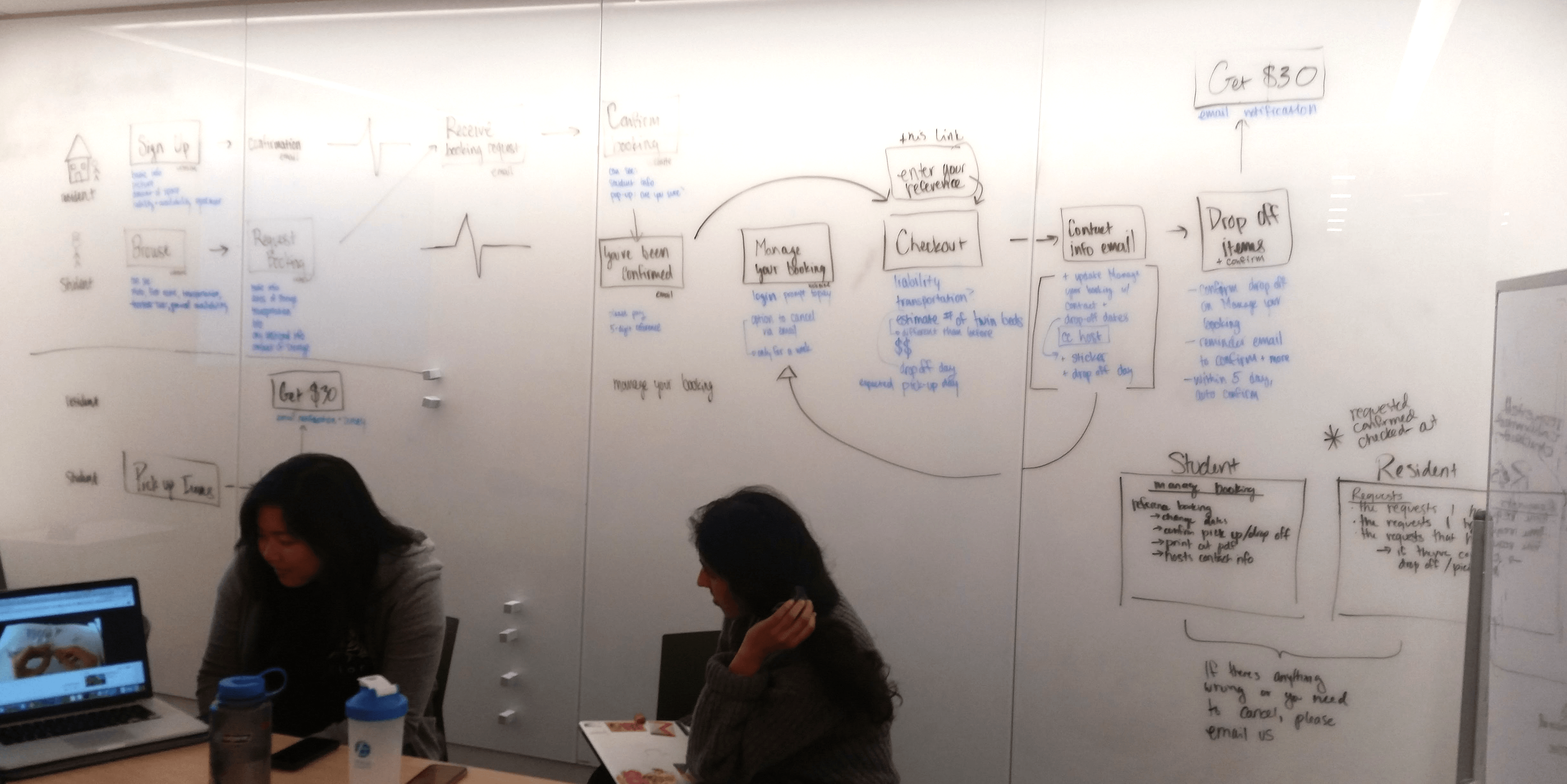Cubic
Cubic is an online platform that connects undergraduate students with summer storage needs to nearby neighborhood residents with spare basement space. You can find us at www.storecubic.com, though we are undergoing construction as we prepare for our next spring iteration.
HCW provide affordable summer storage by facilitating trusting relationships between students and local residents?
The Research
"Most resources available through WashU are located around the 40. It seems like most of the largest waste, however, comes from apartments. If there were a way to bridge that gap, waste on larger items might be reduced!"
anonymous student survey
INSIGHT Students who aren't just moving from one dorm on the 40 to another have limited storage resources.
INSIGHT Many students choose Utrucking because of a lack of other options given the time crunch at the end of the semester.
"People need a more effective way to communicate about what they have and what they want. Free and For Sale is a mess."
anonymous student survey
INSIGHT There is an overall lack of organization. We need to set up a system for communication between the South 40 students and off-campus residents to eliminate waste.
The Users

Anna, the student
- very busy at the end of the semester, looking for convenience (digital communication)
- doesn't fully utilize the Free and For Sale Facebook page because it is chaotic (the group doesn't have a single purpose)
- doesn't have transportation
- throws many belongings out that could be stored if it were more convenient

Rob, the homeowner
- has empty basement space
- has no connection with current students
- doesn't have a strong idea of storage pricing in the area
- looking to better connection with WashU community
- concerned about liability
- would be willing to help students transport their belongings
Version 1 (Mockups)
Homepage

clear pathways of navigation for both users
upfront explanation of process
Resident Listings

photos of users to increase credibility
"quick view" info for easy browsing by students
Resident Profile

more detailed info for increased credibility and assurance
Version 2
Our first iteration, launched for Summer 2016, took a very hands off approach. We had over 5 successful storage partnerships in this beta testing stage.
Student Navigation

We utilized a full-width interactive map as our homepage to immediately engage our primary user (the student). In this Craigslist-like hands-off approach, we give the student the autonomy to find their own deals (like the successful Free and For Sale), but on a simpler, well-designed platform.
Students can browse for a resident that fits their criteria and request their information all directly from the homepage, and then they receive an email connecting them to their resident.
Resident Navigation

Potential residents can navigate easily to the registration form from the menu. Once approved, their listing is posted to the homepage for students to browse.
Residents then receive an email once a student requests their information. Both student and resident are cc'ed on the same email, so they are free to discuss an arrangement without further facilitation.
Current Version
CHECK OUT THE SITE
After Summer 2016, we decided a holistic redesign of our user process was necessary to aleviate some of our pain points:
- students and hosts have a hard time communicating how much storage space is appropriate
- students and hosts have a hard time agreeing on a pricing system
- a lack of information about hosts on our website breeds distrust
- students have no way of paying digitally (and we're not making any profit)
- we have no way of tracking our clients
- students and hosts cannot track their bookings

Ultimately we decided to completely overhaul the website with new font-end and back-end functionality, including better host profiles, a booking and account system, an automated host application system, and fully secure payment using Stripe.
We also came up with a new common storage language for our clients to use: students buy storage space not in terms of cubic feet, but in terms of a number of "twin beds". A twin bed is something all students have access to, and usually utilize to pack their belongings before storage. Our research showed that the average student's belongings do not exceed what can be minimally stacked on a twin bed. Additionally, it is a unit of measurement that hosts can more easily visualize than cubic feet.
I additionally completed a full brand redesign, with a new logo, branding guidelines, and marketing materials.

Logo redesign process with team feedback

Marketing materials redesign process with team feedback
.jpg)
New marketing materials for students and hosts

Thank-you cards for hosts
Next Steps
After our second successful summer (and our first summer turning a profit), we're in the process of collecting user feedback and implementing a website update that smooths the process for both students and residents. So far, I have implemented a fully automated email system using Mailjet to automate user communication, so we can focus on customer service. Some of the future updates include full resident profiles, a reviewing system, and a more detailed check-out process regarding space and transportation.